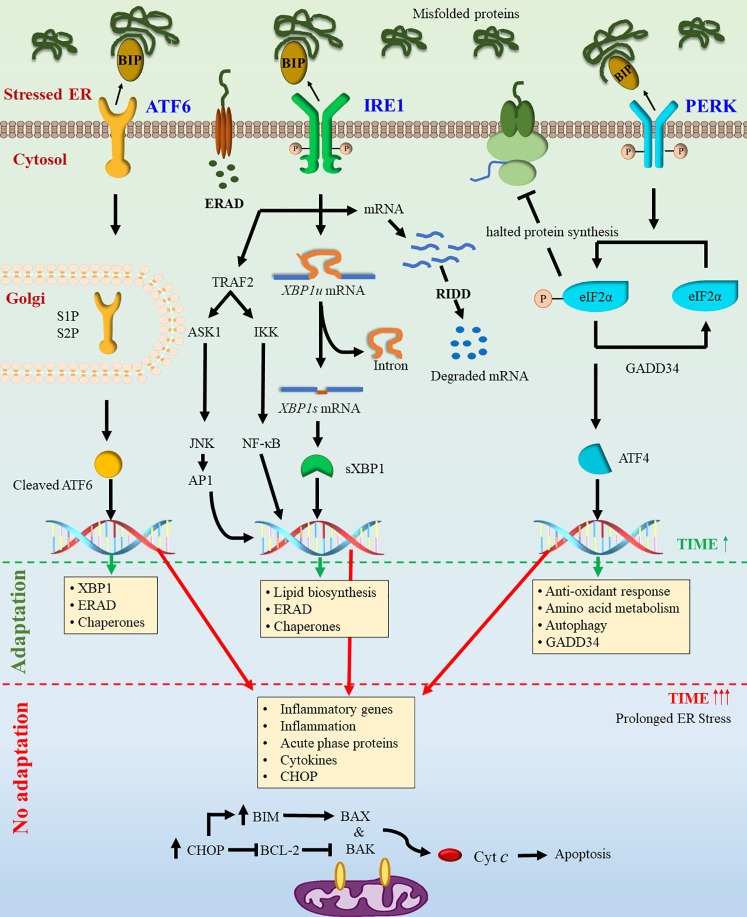Figure 1.
Activation of unfolded protein response. Due to stress conditions, unfolded protein levels increase in the ER lumen. The dissociation of GRP78 from transmembrane sensors PERK, ATF6, and IRE1 leads to the activation of UPR signaling. Activation of IRE1 and PERK results in their oligomerization and transphosphorylation. Active IRE1 triggers the unconventional splicing of XBP1u mRNA resulting in the translation of an active transcription factor sXBP1. The active IRE1 can also interact with JNK and TRAF2 and thereby activating downstream signaling. The activation of ATF6 leads to its translocation to the Golgi and its proteolytic cleavage, resulting in a transcriptionally active form. Activation of PERK triggers phosphorylation of elF2α leading to global translational attenuation and favoring translation of ATF4. Activation of all three pathways activate downstream transcriptional machinery resulting in expression of target genes to overcome the stress conditions. Persistent and excessive ER stress may lead to activation of mitochondria mediated cell death pathway.

